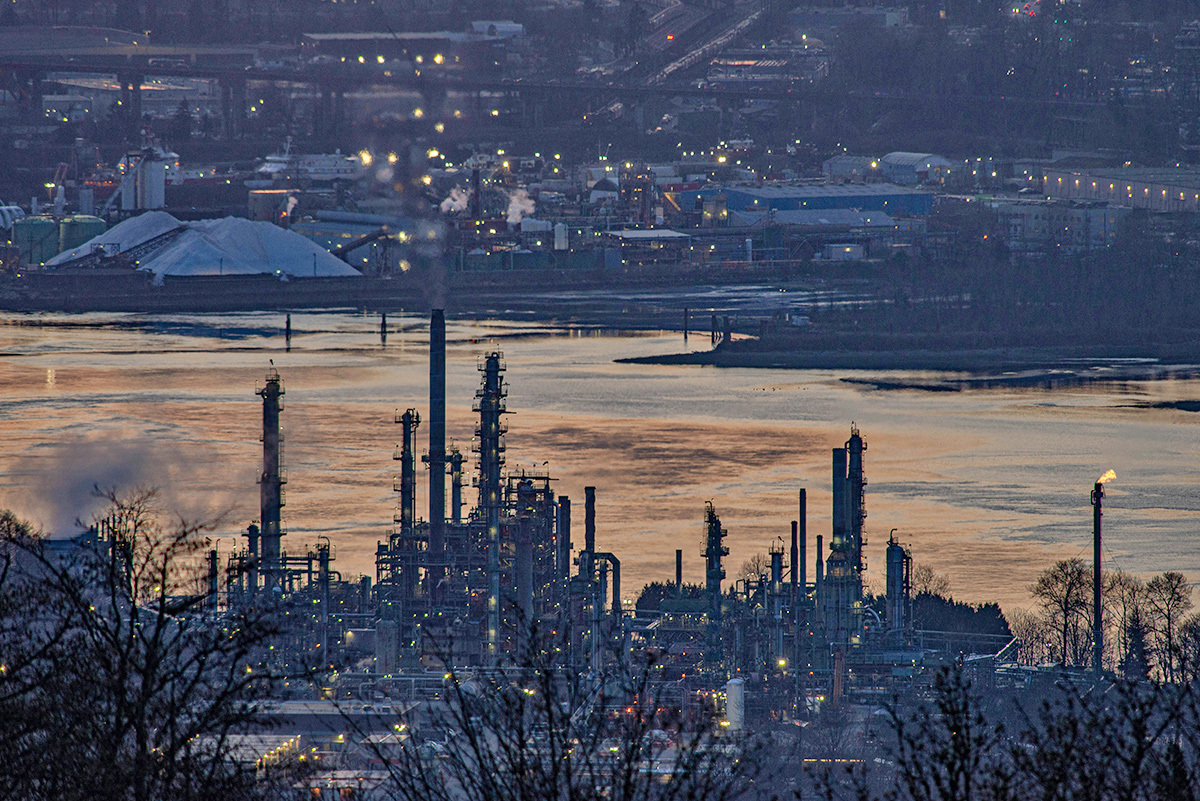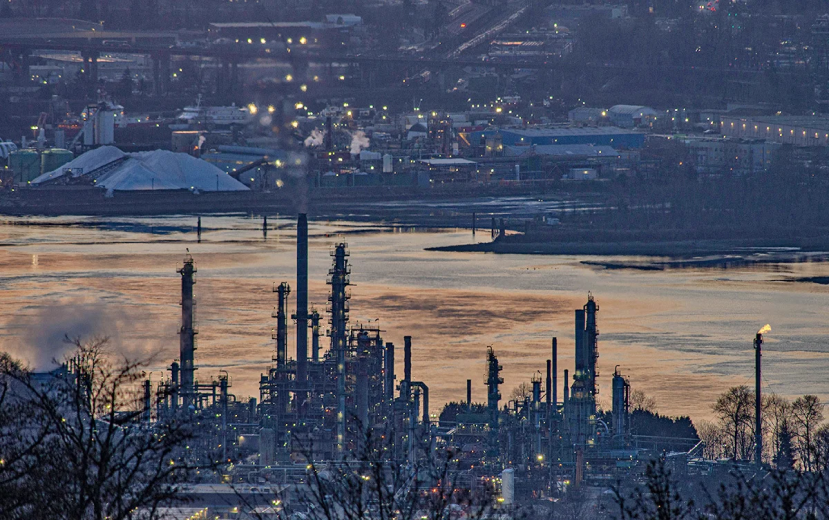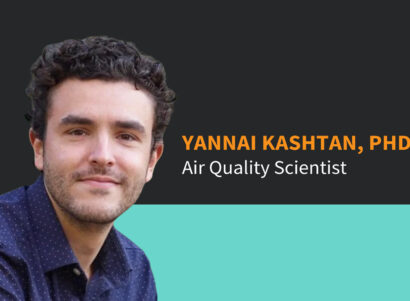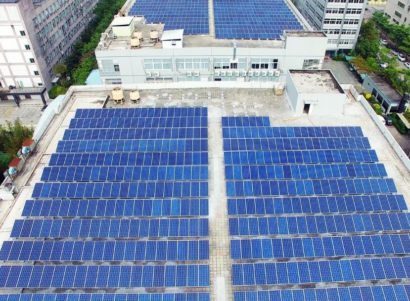
What is Methane?
Looking for a refresher on what methane is and what it has to do with human health? You may recall hearing about methane in your high school chemistry or biology class. If it has been a while and you need a reminder, this resource is for you.
Methane (CH4) is a colorless, odorless gas that is produced from natural sources (e.g., wetlands, swamps, animal guts) and also from human activity sources (e.g., fossil fuel extraction like mining or drilling, livestock farming, and landfill decomposition). In chemical terms, methane is the simplest hydrocarbon, consisting of one carbon atom and four hydrogen atoms (queue in high school chemistry teacher drawing molecules on a whiteboard).
Methane is also a potent greenhouse gas (GHG) with 86 times the heat-trapping ability of CO₂ over a 20-year period, despite its shorter atmospheric lifetime. According to the Global Carbon Project, methane concentrations in the atmosphere hit the highest levels in at least 800,000 years in 2024.
If methane emissions continue to rise rapidly, the world will almost certainly warm well beyond the two degrees of warming above which scientists warn that the impacts of climate change may become irreversible. This is why controlling methane levels in the atmosphere is one of the best ways to curb global warming in the near term (read more on this in our recent post From Methane Data to Action).
You may also have heard of methane by another name–natural gas. Methane makes up the majority of natural gas (50-99%), which is why natural gas is also often referred to as “methane gas.”
Where Do Methane Emissions Come From?
Methane is derived from two primary sources: natural sources and industrial sources, which are also referred to as sources resulting from human activities.
In nature, methane is produced through the anaerobic decomposition of organic matter. Some examples of natural sources of methane include wetlands, oceans, termites, volcanoes, and methane deposits that live beneath Arctic and Antarctic permafrost.
Human activities, such as oil and gas production, livestock farming, and landfill operations, also produce methane emissions and are responsible for more than doubling atmospheric methane levels over the past two centuries. At least two-thirds of annual methane emissions now come from human activities. The production, transport, and use of natural gas and coal, in particular, are significant sources of methane in our atmosphere.
The Relationship Between Methane & “Natural” Gas
The terms “natural gas” or “renewable natural gas” are misleading. Qualifying gas as natural downplays the health and safety risks associated with transporting or burning it.
Methane is a compound with many sources that occurs naturally through geological and biological processes. However, methane is also the primary component of natural gas, and extracting, refining, and transporting it result in a highly industrialized product that presents health and safety risks.
There has recently been a burgeoning focus within the scientific community on the health risks associated with methane-linked pollutants. We at PSE have recently formalized our work on the health risks associated with known methane sources through our Methane Health Initiative, an umbrella for our body of research that advances the scientific foundation for methane mitigation solutions that protect public health and the climate.
When Methane Emissions Become Unsafe
When Methane Poses an Explosion Hazard
While methane itself is non-toxic, it can pose explosion hazards at high enough concentrations in the presence of an ignition source. Odorants are added to natural gas before distribution to allow individuals near gas appliances and pipelines to identify leaks. While odorant concentrations are required to be high enough for someone with an average sense of smell to detect a leak before it poses an explosion risk, individuals with a weaker or missing sense of smell may miss a leak and fail to stop it before it catches on fire. Methane is also a simple asphyxiant, meaning that it can displace oxygen and suffocate at elevated concentrations.
When Other Pollutants Accompany Methane From Oil and Gas
When sources release methane, they don’t just emit methane; they emit a suite of gases that can have their own effects.
From research by PSE and others, we know that a range of toxic pollutants almost always accompany methane emissions from oil and gas operations. For example, research from PSE scientists shows that uncombusted (unburned) natural gas leakage from residential natural gas appliances releases volatile organic compounds (VOCs) into the air. In addition to volatile organic compounds (VOCs), combusted (burned) natural gas, on the other hand, releases numerous air pollutants, carbon dioxide (CO2), carbon monoxide (CO), nitrogen oxides (NOx), and particulate matter (PM). Because these substances are closely linked, whether methane is leaking or burned, emissions across the entire gas supply chain–upstream, midstream, and downstream–can pose serious health risks.
In case you’re wondering, upstream oil and gas refers to the initial stages of exploration and production, including activities like onshore and offshore drilling. Midstream refers to the transportation and storage of natural gas, crude oil, and other energy products between extraction and the final consumer. Downstream refers to the final post-production stage of the oil and gas supply chain, where products are distributed to consumers.
Less Is Known About Pollutants From Other Methane Sources
Compared to the extensive research on methane emissions from the oil and natural gas supply chain, far less scientific research exists on the pollutants associated with methane from other sources, such as landfills and agriculture. Although landfill gas is primarily composed of methane and carbon dioxide, some studies have shown that it can also contain a range of hazardous volatile organic compounds (VOCs), including halogenated compounds and aromatic hydrocarbons. However, the specific composition of landfill gas can vary significantly depending on factors such as the landfill’s age and the nature of the waste materials deposited. While these studies exist and have yielded important findings, research that examines co-pollutants that accompany methane emissions from agricultural and landfill sources remains limited.
What Makes Certain Air Pollutants Hazardous?
An insidious quadfecta–benzene, toluene, ethylbenzene, and xylene, also known as BTEX–are among the volatile organic compounds released when methane is emitted, leaked, or burned throughout the oil and gas supply chain (from extraction to household appliances). The EPA lists these as hazardous air pollutants (HAPs) under the Clean Air Act of 1990. For reference, acute or short-term exposure refers to exposure lasting from hours to days at elevated concentrations, whereas long-term exposure refers to years of exposure.
- Benzene: the most abundant and dangerous compound of BTEX. It is classified as a “known” human carcinogen by the US Environmental Protection Agency. According to the International Agency for Research on Cancer, long-term exposure to airborne benzene increases the risk of cancer, especially leukemia, in humans.
- Toluene: Low levels of toluene can lead to headaches, dizziness, confusion, and unconsciousness. According to the Centers for Disease Control and Prevention (CDC), higher levels of exposure can lead to nausea, organ damage, and cardiovascular issues. Chronic exposure can lead to cognitive deterioration, such as dementia, reproductive harm, and even hearing or vision loss.
- Ethylbenzene: As explained by the Agency for Toxic Substances and Disease Registry, short-term exposure to ethylbenzene can cause eye and respiratory irritation, headache, dizziness, and more. Long-term exposure can have a lasting effect on the nervous system, may cause cancer, and is associated with kidney and liver damage, including tumors.
- Xylene: Per the CDC, exposure to this pollutant is associated with numerous health effects, including nervous system damage, respiratory damage, organ damage, gastrointestinal pain, nausea and vomiting, neurological problems, reproductive system disruption, and endocrine disruption.
How Methane Affects The Climate
As mentioned earlier, methane is a major greenhouse gas that accounts for 11 percent of global greenhouse gas emissions. It is more than 28 times as powerful as carbon dioxide at trapping heat in the atmosphere, and is responsible for a 30% rise in global temperatures since the Industrial Revolution.
In other words, it is a significant driver of climate change.
Compounding this issue is the risk of permafrost melt, which the IPCC defines as a climate tipping point. Permafrost, which contains frozen organic matter and methane hydrate deposits, thaws as global temperatures rise, releasing more methane and carbon dioxide into the atmosphere and further contributing to global warming and exacerbating climate change.
How Methane Sources Affect Air Quality
Methane emissions from oil and gas operations and fossil fuel extraction are almost always accompanied by hazardous air pollutants (HAPs), volatile organic compounds (VOCs), and/or nitrogen oxides (NOx). Additionally, methane contributes to increased tropospheric (ground-level) ozone, a strong respiratory irritant regulated by environmental agencies across the globe.
Gas Stoves & Indoor Air Pollution at Home
One way people are exposed to pollutants found in natural gas is through the presence and use of gas stoves in homes. Our research has shown that leaks from gas stoves are a common occurrence. Even when gas stoves are not in use, they can emit health-damaging pollutants indoors when small amounts of unburned gas escape from the stove.
Burning natural gas (also known as combustion) generates benzene, a known human carcinogen, and nitrogen-based pollutants like nitrogen dioxide (NO2), a known respiratory irritant associated with the development of asthma. Studies like this one from RMI have shown that “indoor gas stove use for cooking is associated with an increased risk of current asthma among children.”
Research conducted by PSE and Stanford has revealed several findings on the impact of burning gas in homes on indoor air quality. Read our post–Gas Stoves and Indoor Air Pollution Explained- for more information about gas stoves and indoor air quality.
Methane Emissions & Outdoor Air Pollution
In addition to contributing to the formation of ground-level ozone, a harmful air pollutant that impacts the respiratory system, methane leaks from oil and gas activities are associated with degraded local air quality because because methane is almost always co-emitted with other hazardous air pollutants, which have been shown to exist throughout the supply chain from extraction to the appliances in your home.
In Kern County, CA, for instance, PSE researchers partnered with the Central California Environmental Justice Network (CCEJN) to evaluate air quality in communities located within 300 feet of oil and gas wells. Researchers measured methane and VOC concentrations from oil and gas infrastructure and assessed the potential impact of such leaks on local air quality and their associated risk to human health. Using infrared cameras, PSE’s scientists helped identify methane leaks and associated hazardous air pollutants around parks, residences, neighborhoods, and bike trails, highlighting how close these sources of dangerous pollutants are to where people live, spend their days, and take their kids.
Even after oil and gas infrastructure is no longer in use, it can still pollute and degrade nearby air quality. For example, abandoned orphaned wells are known to leak various pollutants and pose numerous environmental and public health risks to nearby communities.
How Methane Sources Impact Public Health
When oil and gas facilities emit methane, they also release hazardous air pollutants, including BTEX, which can pose significant risks to public health and safety for nearby communities and workers. Whenever methane emissions are detected from an oil and gas facility, health-damaging pollutants are also being released, even if they can’t be measured.
PSE Healthy Energy created the Methane + Health Initiative (MHI) to research, identify, and quantify the connections between methane, air quality impacts, and human health risks. Through our MHI initiative, we are also quantifying and visualizing these impacts and risks with forthcoming data tools. MHI enhances the scientific and public understanding of the relationship between methane emissions, air pollution, and public health, providing a scientific foundation for comprehensive solutions that protect both public health and the climate.
Methane Risk Map to Be Made Public Summer 2025
New measurement technologies aboard airplanes and satellites, such as those utilized by Carbon Mapper, can detect and quantify large methane-emission events. In addition to these cutting-edge technologies, PSE scientists are utilizing state-of-the-art air quality modeling tools to gain a deeper understanding of how emissions from methane sources, such as oil and gas wells, impact air quality in nearby communities.
In summer 2025, PSE will unveil the flagship tool of its Methane Health Initiative – the Methane Risk Map – which utilizes data from actual methane emissions events and models concentrations of hazardous air pollutants emitted alongside methane to quantify the air quality impacts and human health risks associated with methane-linked hazardous air pollutants.
















